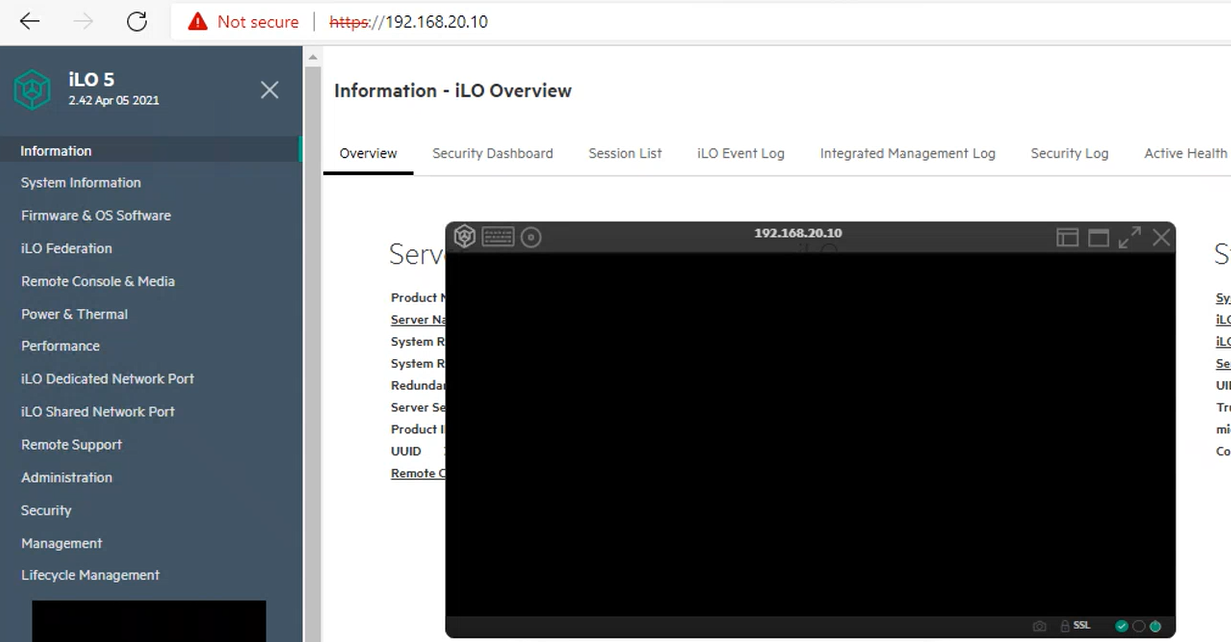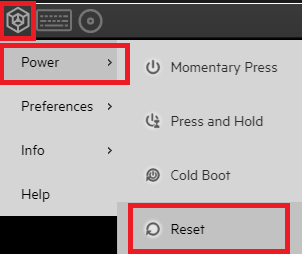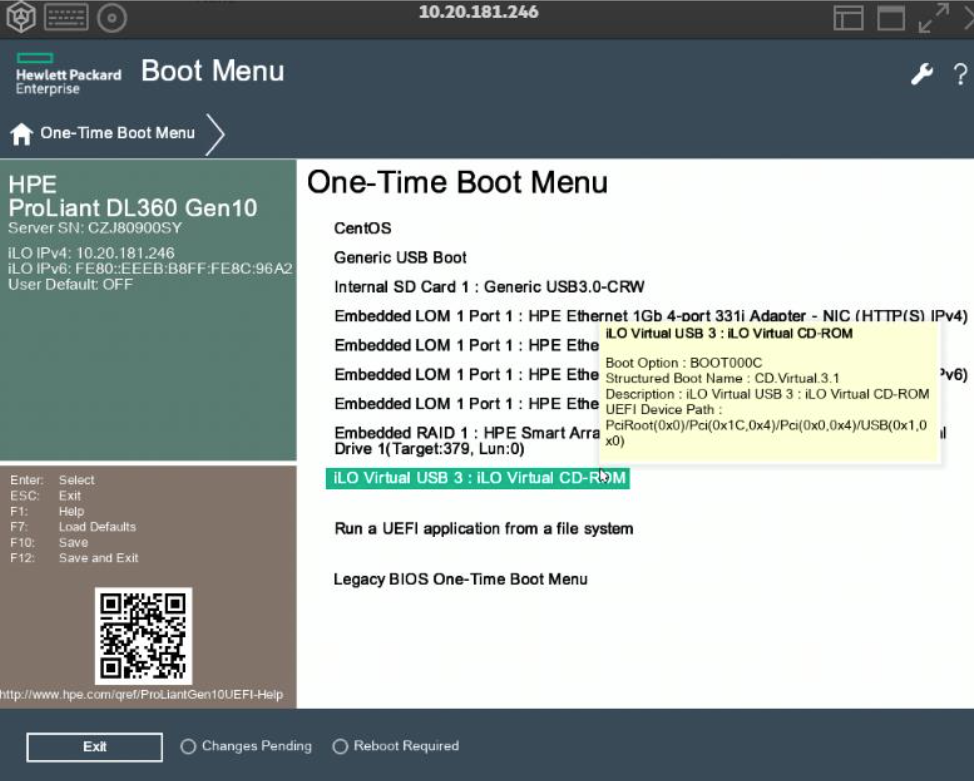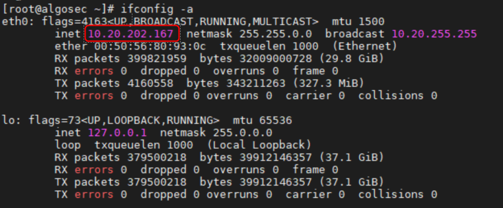Install ASMS with iLO 5/6
This topic explains how to install ASMS A33.00 on a new or re-purposed AlgoSec hardware appliance using the HPE iLO 5/6 Web Interface. This is a streamlined process that can easily be performed on a remote or local AlgoSec appliance.
| Use | For hardware type |
|---|---|
| iLO 6 |
AlgoSec Hardware 3rd generation Appliances 3240 and 3480 |
| iLO 5 | AlgoSec Hardware 2nd generation Appliances 2403 (Gold) and 2203 (Silver) |
Before you start
Before you start, make sure you are equipped with the following:
-
iLO IP address of your AlgoSec Hardware Appliance.
-
iLO Username (always Administrator) and Password (written on the label on the AlgoSec Hardware Appliance rear panel).
-
ASMS CLI username and password for user root.
-
Management IP should be configured, and a network cable should be connected to the management port.
-
The installation can be completed without an internet connection. However, obtaining an IP address requires a LAN connection, since a DHCP server is needed. Without it, the ASMS cannot function and may encounter issues.
-
On AlgoSec Hardware Appliances , make sure that hyper-threading mode is disabled.
 Check hyper-threading mode status
Check hyper-threading mode status
Set boot mode to: UEFI
For AlgoSec Hardware Appliances 2nd generation 2203 and 2403 only (iLO 5)
"Boot Mode" option must be set to "Unified Extensible Firmware Interface (UEFI)." if not already done.
Note: that if you make any changes to Bios Mode, you will need to reset the system for the changes to take effect.
Do the following:
-
With your web browser or Windows Desktop, open the iLO IP address.
-
On the iLO 5 screen that is displayed:
Enter your AlgoSec Appliance machine's iLO credentials: login name and password
-
Navigate to Administration.
-
Select the Boot Order tab. The Boot Order tab opens.
-
Set the Unified Extensible Firmware Interface (UEFI) radio button, if not already.
-
If you have made a change in the boot mode, click Apply. Reset the system for changes to take affect.
-
Download iso-file to your local machine
For all supported hardware models
-
Browse to the AlgoSec Portal, and navigate to Downloads > Software > AlgoSec Security Management Suite. Select New Installation - Select Deployment Type, and select Repurposed AlgoSec Hardware Appliance from the list. Select version A33.00 (Latest).
-
Click Next.
-
Download the image file (.iso) and store it on your PC.
Load the image file (.iso) to the iLO
AlgoSec Hardware Appliances 2nd generation 2203 and 2403, use iLO 5.
AlgoSec Hardware Appliances 3rd generation 3240 and 3480, use iLO 6.
Do the following:
-
With your web browser or Windows Desktop, open the iLO IP address.
-
On the iLO 5 or 6 screen that is displayed, enter your AlgoSec Appliance machine's iLO credentials: login name and password.
-
On the displayed iLO overview page, click on the small black screen displayed at the lower left of the screen and select either .NET Console or Java Web Start Console (we recommend you do not use HTML console) from the pop-up menu that is displayed.
The Console is displayed with the IP address of your target AlgoSec Appliance machine.
-
Click on the Virtual Media
 button in the title bar of the HTML Console and then select CD/DVD followed by Local *.iso file.
button in the title bar of the HTML Console and then select CD/DVD followed by Local *.iso file.
-
In the Windows file explorer that is displayed, browse and select the image file that you stored on your PC in Download iso-file to your local machine above.
-
From the menu bar of the iLO console, reset the appliance:
Install ASMS from iLO
For all supported hardware models
Following the steps below, to install ASMS:
-
From the menu bar of the iLO console, reset the appliance again:
-
When the system starts up, from the boot menu press F11 to enter to the Boot Menu. (you may need to press it multiple times).
-
Select iLO Virtual USB 3: iLO Virtual CD-ROM.
The ISO installation process is initiated. The first part of the process covers the installation of the operating system, Rocky Linux 8.8. This first part of the installation should take approximately 2.5 hours .
-
Once the Rocky Linux 8.8 installation has completed, press Ctrl+C to exit to the Linux Shell.
-
To track the second phase of the ISO installation, the ASMS installation process, enter the following command at the prompt:
tail -f /root/asms-install.log
Note: The second phase may take approximately 20-30 minutes to complete. When the second phase of the ISO installation is finished you will see the following banner in the /root/asms-install.log:

-
Edit /usr/lib/systemd/system/syslog-ng.service As follows:
-
Change the value of After=network.target to After=multi-user.target.
-
Save the changes and reboot the system (important).
-
-
Verification:
-
At the prompt, type:
# algosec_conf
The algosec_conf menu of ASMS is displayed.
Note: The successful display of the algosec_conf menu is an additional sign that ASMS was installed successfully.
-
Make sure your management IP is configured (note: network cable must be connected to management port):
Exit to the linux shell command line by pressing a, and run the command:
ifconfig -a
Tip: If no management IP exists, you can return to the algosec_conf menu by entering algosec_conf in the Linux shell command line, and enter option 1. Configure IP Address.
-
In the algosec_conf menu, enter option 17. System Health.
-
From the System Health display, enter option 1. Check services status to verify that all services are running in status OK.
-
-
TIP:
Press a to exit to the shell.
-
To get the name of the AFA build that has just been installed, at the shell prompt, type:
rpm -q fa
The reply is the name of the AFA build that has just been installed.
-
To get the name of the Algosec Appliance build that has just been installed, at the shell prompt type:
rpm -q algosec-appliance
The reply is the name of the Algosec Appliance build that has just been installed.
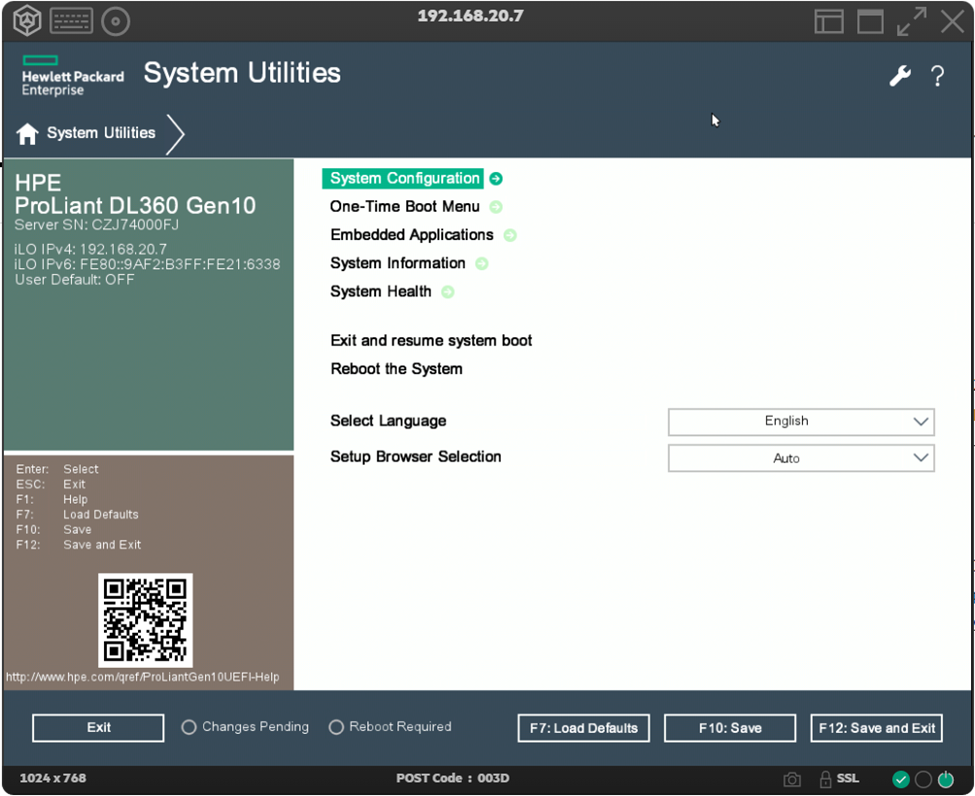
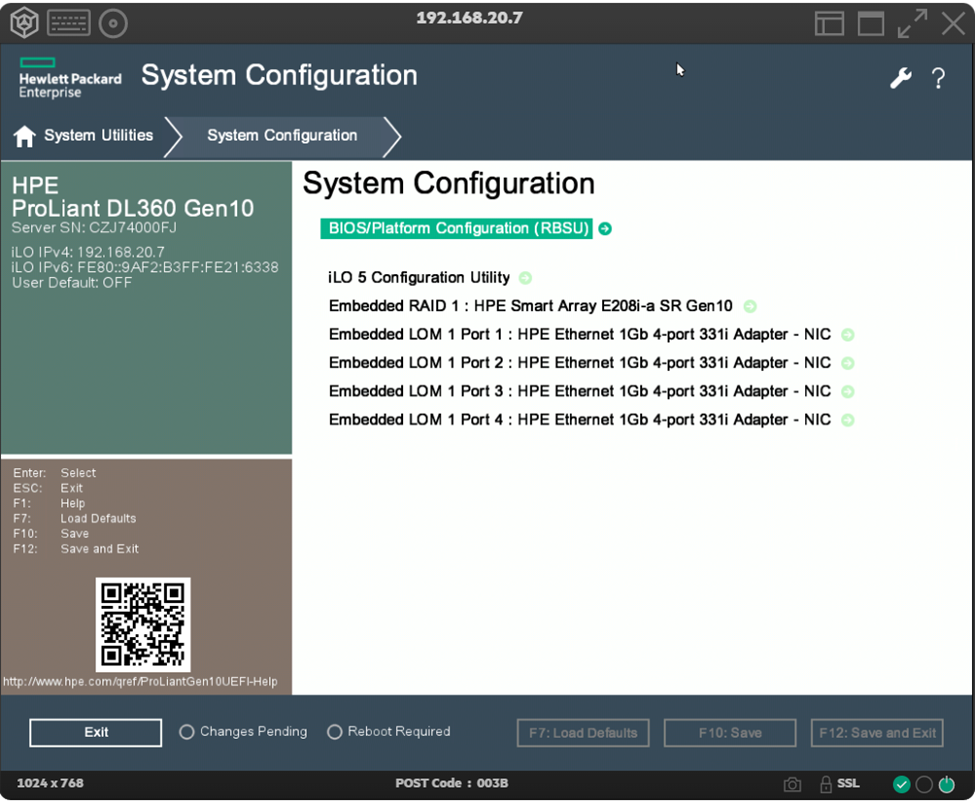
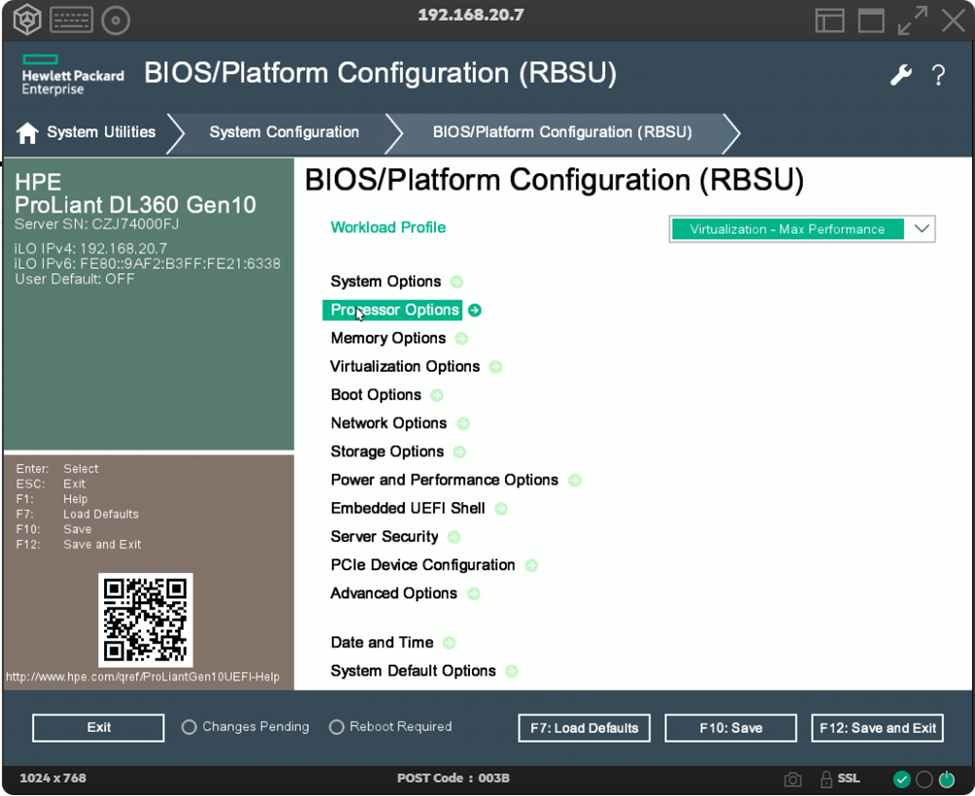
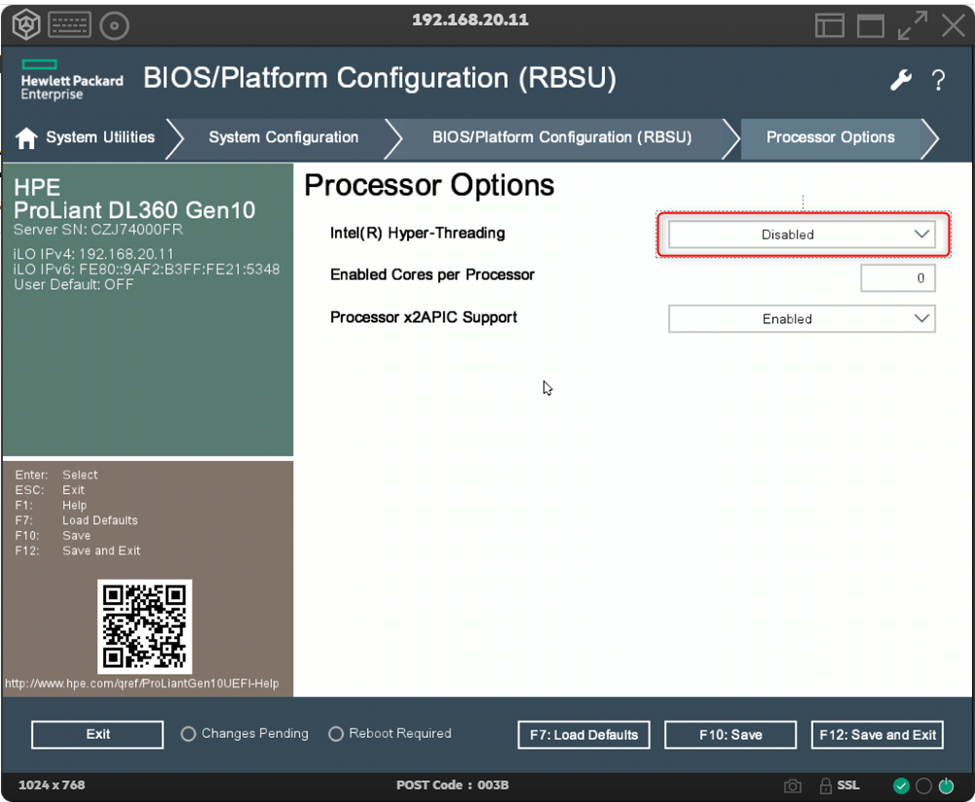
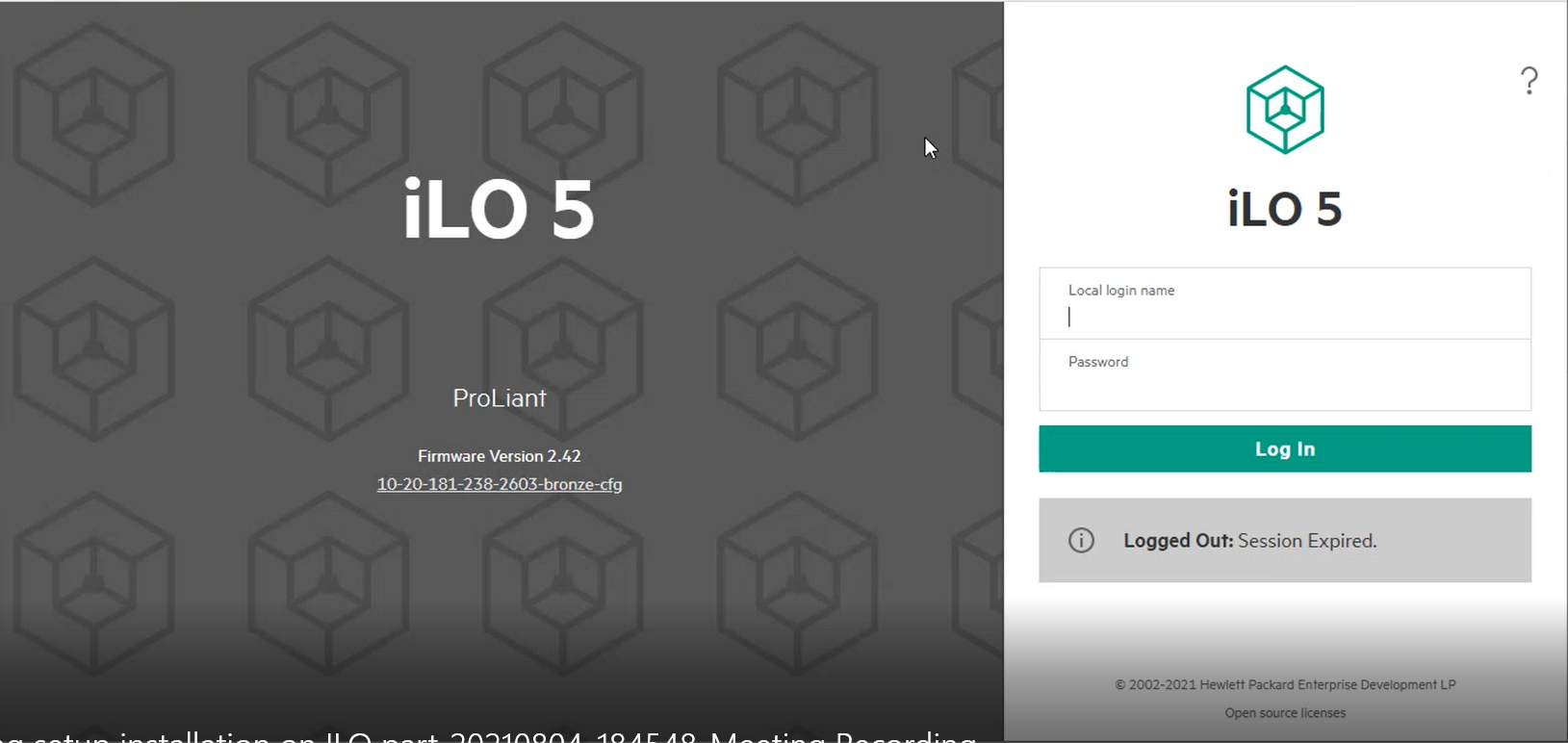
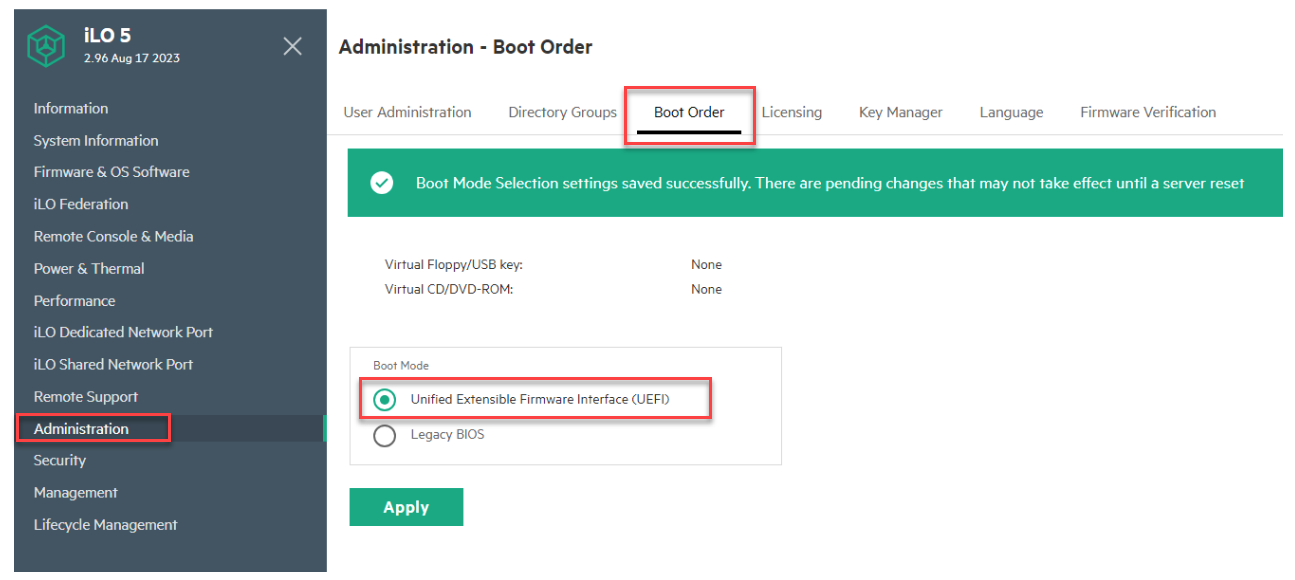
 expand arrows.
expand arrows.
